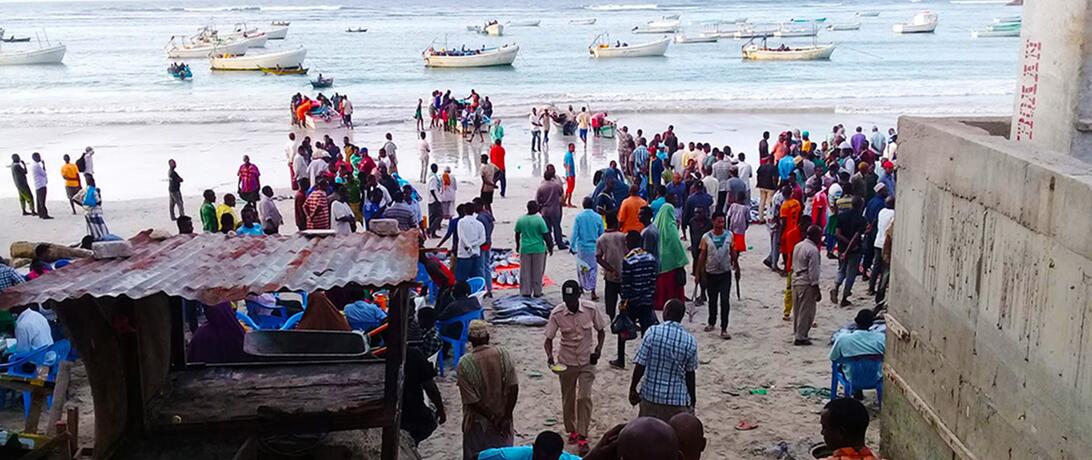
As part of Project Kalluun, students from City University in Mogadishu go to the fish market in Lido beach to better understand the fish stocks and catch in Somali waters.
Just north of Mogadishu, Lido beach in the village of Abdiaziz was developed during the late 1930s for Italians living in Somalia’s Italian capital. “Lido” is the Italian word for “beach.” Today, hundreds of Somali fishermen use the beach for landing and selling their catch.
Most fishermen use small boats and ancient fishing techniques to catch fish. The long but narrow beach is crowded with fishermen, traders, and buyers. In the corners, women prepare tea, bread, and pancakes for fishermen and customers craving a snack.
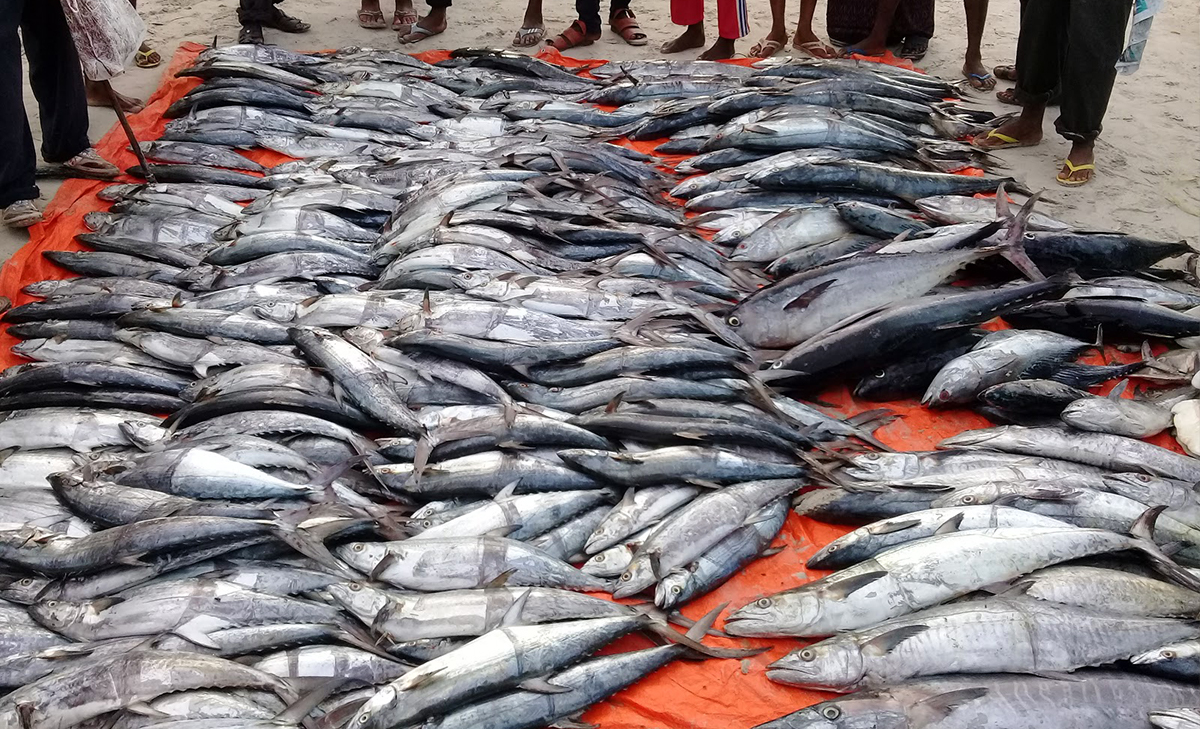
Photo: Jamal Hassan of City Univerity
The fish caught in the waters off Lido beach are plentiful: tuna, mackerel, wahoo, and mahi-mahi are lined up every morning for sale. The busy Lido fish market is an incredible opportunity to learn more about the fish stocks in Somali waters.
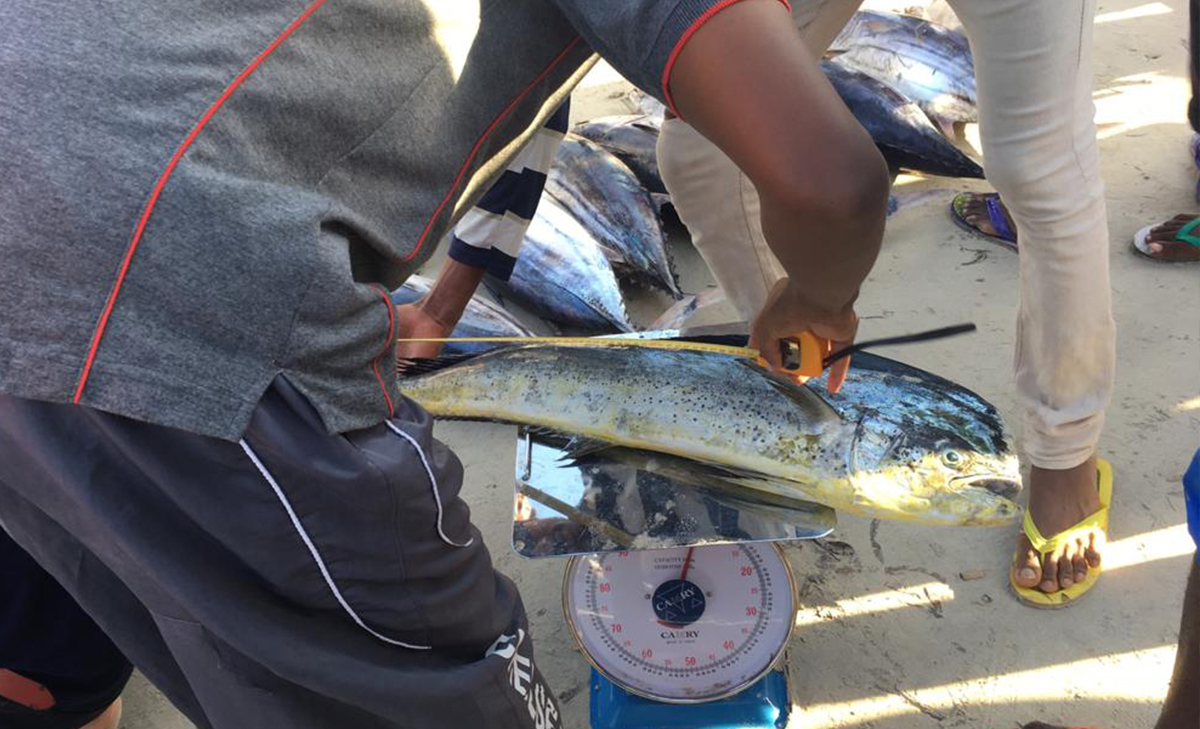
Photo: Ahmed-Yasin Moge
In 2018, Project Kalluun was launched by Secure Fisheries and City University (CU) to help us better understand the fish caught and sold in Lido: what kind, how big, and how many. Students from CU, based in Mogadishu, began a six-month study of the fish and fishermen at Lido. Their objective was to develop a uniform system for the collection of catch data, which can be repeated throughout the Somali region, in order to inform government policies and management of marine fisheries. Bit by bit, Project Kalluun will improve the development and management of the fisheries sector, as it will help to make fishing more predictable and improve business profits, support export markets for Somali fish, and teach us about the biology of the fish in Somali waters.
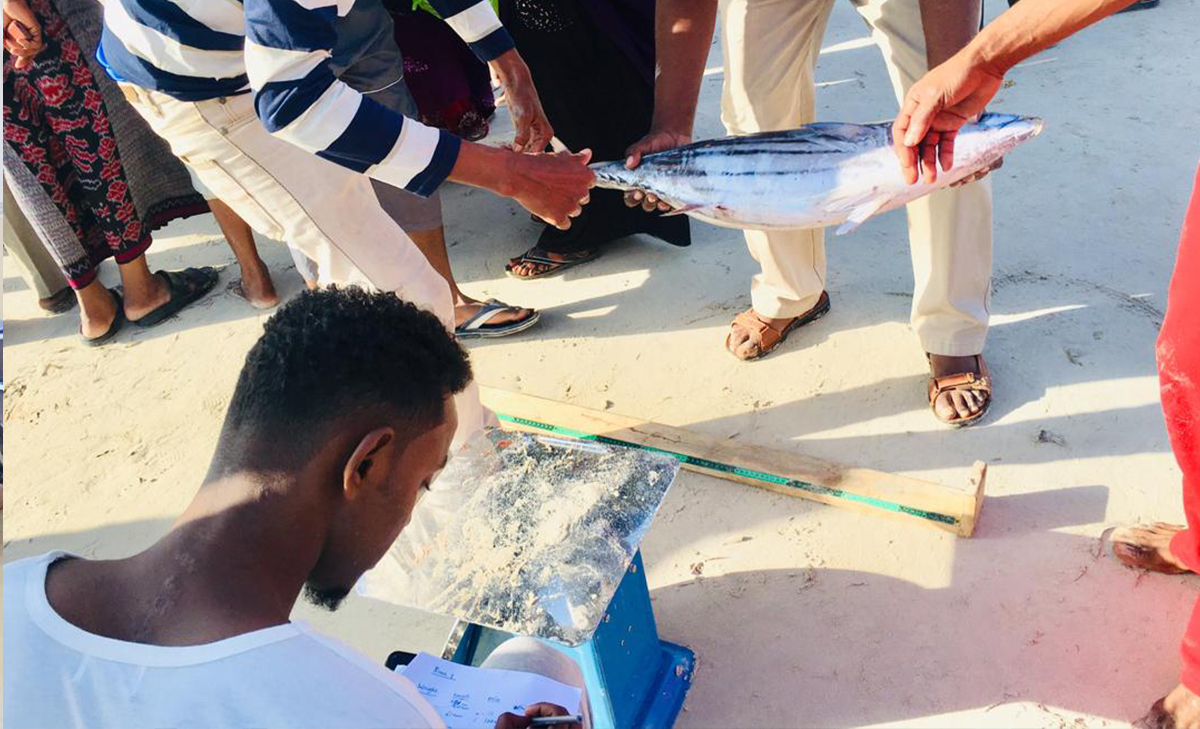
Photo: Ahmed-Yasin Moge
Kawakawa (dhiiglow), yellowfin tuna (jeedar), and skipjack tuna (sanuuro)—like the one being measured here—were the most commonly caught fishes during this study, and they are also the most popular with consumers who enjoy their taste. Consumers are particularly fond of tuna because it lacks the small and numerous bones that some other fishes contain. These popular fish fetch a good price for fishermen: for a 15 kg fish, a seller can earn between US$8 and US$11.

Photo: Jamal Hassan of City Univerity
The busy market opens very early in the morning, around sunrise. As boats arrive on the shore, buyers and sellers vie for the most popular fish. The students of CU rush to identify and measure fish before they are snatched away. “From starting days, it was like another world where everything was rushed. The fishermen were landing their fish offshore and the customers were huddling around mats covered in fish. Everything happened in the tidal zone. When boats arrived intermittently, the crowd would rush to the boat and bargain severely,” said Abdullahi.
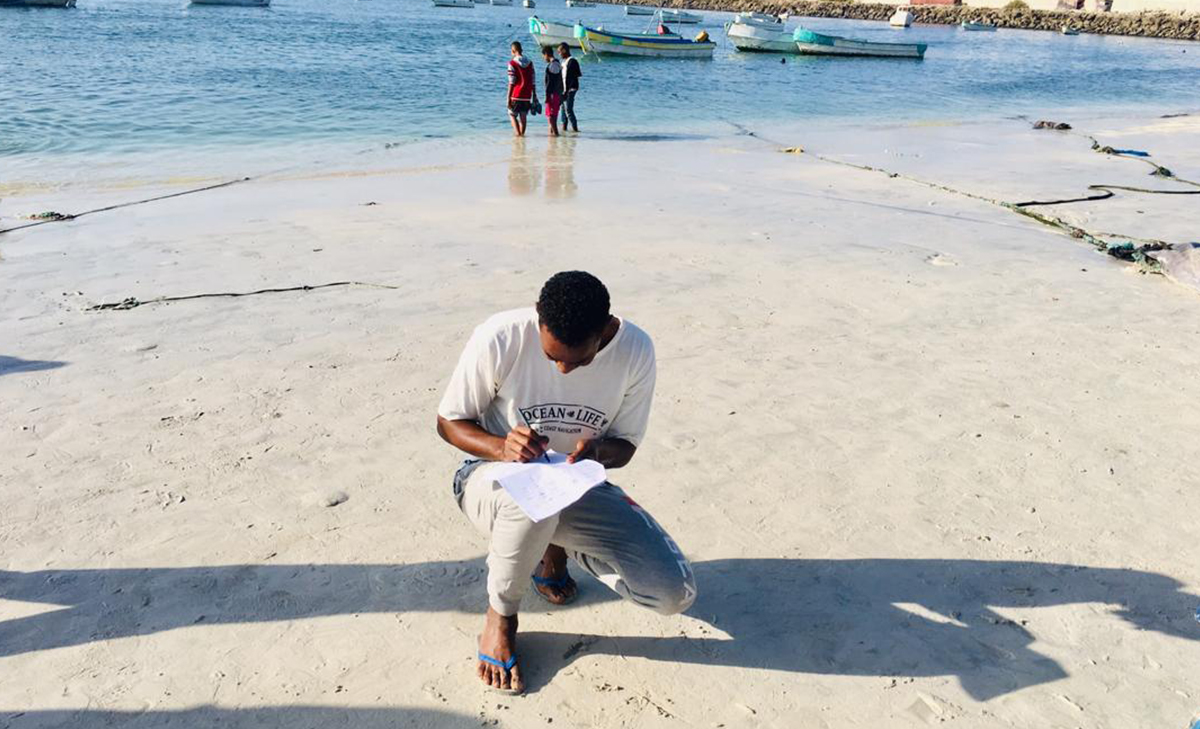
Photo: Ahmed-Yasin Moge
The student data collectors are becoming experts in Somali fisheries. Mursal remarked, “I am learning how to identify external characteristics and names of fish and the most abundant fish species in Lido. I have also acquired relevant skills such as teamwork and problem-solving skills.” The team also interacted with and learned directly from local fishermen. Fardowsa, the team leader, remarked, “Through Project Kalluun, I learned cooperating with one another, being patient to reach my goal, as well as dealing with tough situations.”
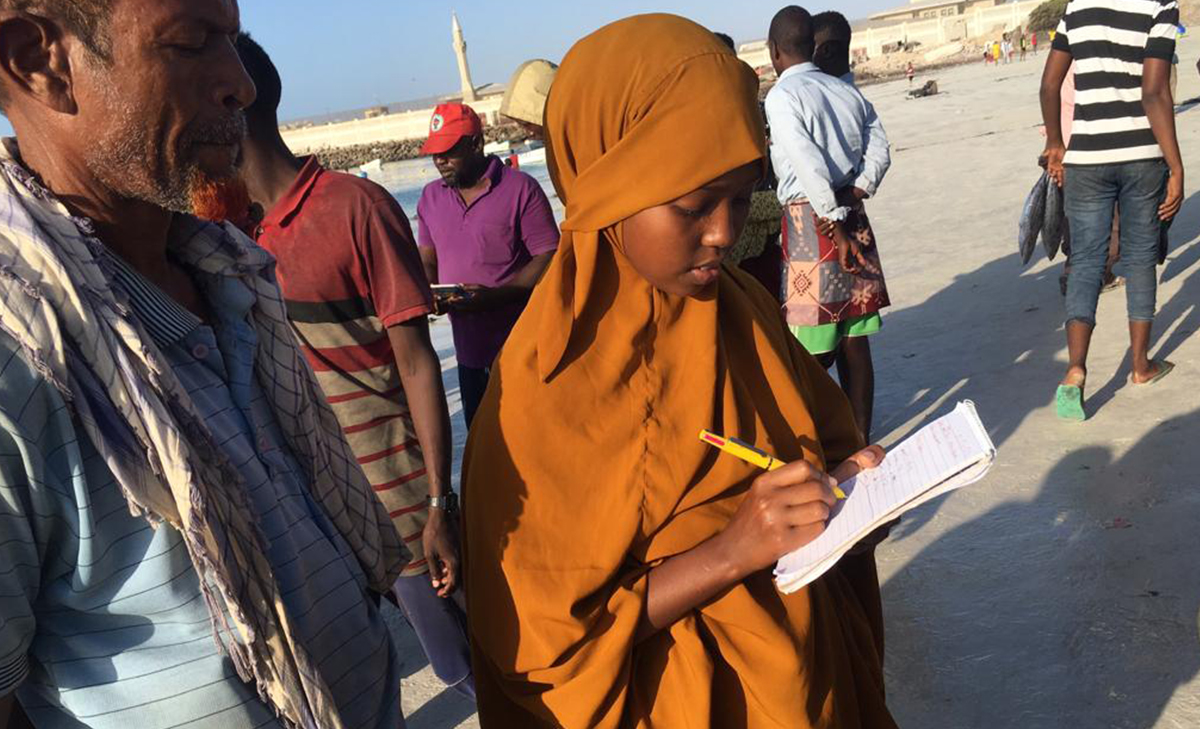
Photo: Ahmed-Yasin Moge
Mohamed reflected on the combination of education with practical data collection: “Project Kalluun helped me learn a lot about the local fisheries at Lido beach, especially the most common and favored fish species. This inspired me to consider the prospect of starting my own fisheries business after I realized the demand and profitability for certain fish species such as king mackerel. It also helped me gain particular skills related to my field such as taking scientific measurements of fish, being able to identify various fish species, and strengthening my knowledge of fish anatomy.”

Photo: Ahmed-Yasin Moge
After the last boat has come to shore, the beach slowly clears of people. The students involved in Project Kalluun return to university with notebooks full of data to enter and analyze. As the Somali fisheries sector grows, entrepreneurs who understand the science behind their products will have an advantage. Somali marine science students provide a bright perspective for the future in a field rich with promise.
Article Details
Published
Topic
Program
Content Type
Opinion & Insights